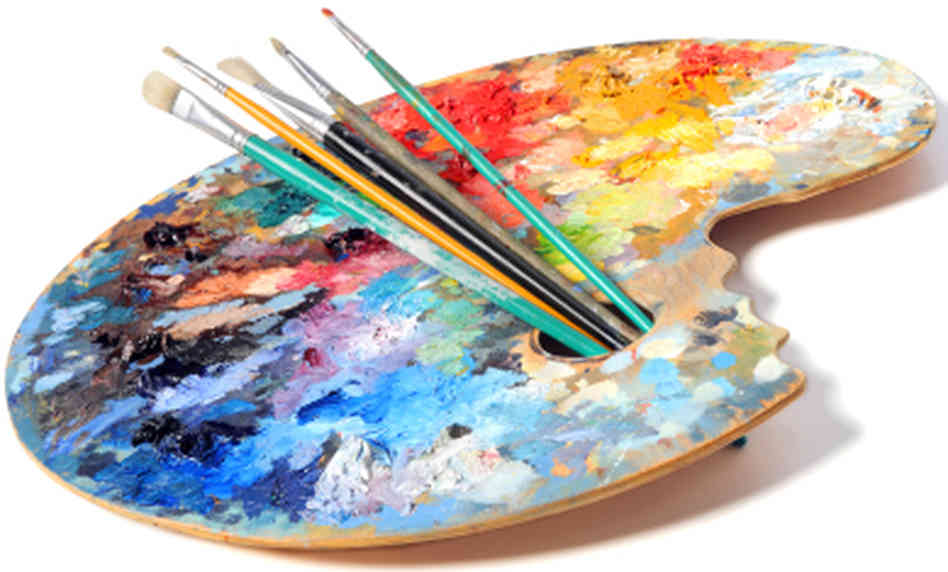A Deep Study one of the most Renowned Trump Artworks of Current Years
A Deep Study one of the most Renowned Trump Artworks of Current Years
Blog Article
Looking Into the Diverse World of Artistic Expression: From Surrealism to Abstract Realistic Look
In the world of creative expression, from the dreamlike landscapes of surrealism to the elaborate play of light and form in abstract realism, artists have constantly pushed the boundaries of creativity and imagination. Each motion holds a distinct lens where the world is viewed and interpreted, supplying a glimpse right into the midsts of human emotion, assumption, and assumed. As we explore the complex world of art, we exist with a tapestry of designs, methods, and philosophies that test our understanding and prompt reflection. The journey via these varied forms of imaginative expression guarantees to unravel a rich tapestry of aesthetic narration and intellectual inquiry that captivates the mind and stirs the heart.
Surrealism: Releasing the Subconscious
Surrealism, a progressive artistic activity of the 20th century, explored the midsts of the subconscious, introducing a world of dream-like imagery and unique associations. Pioneered by musicians like Salvador Dali, René Magritte, and Joan Miró, Surrealism looked for to test the standard ways of seeing and understanding art. Through methods such as automatism and dream analysis, Surrealist artists aimed to tap into the unconscious mind to reveal hidden truths and wishes.
One of the crucial elements of Surrealism was the emphasis on the irrational and the uncanny. By combining unforeseen aspects in their works, Surrealist musicians aimed to produce a sense of disorientation and shock in the visitor. This disturbance of logic and reason was meant to prompt a much deeper expedition of the subconscious and the enigmas of the human mind.
Abstract Realism: Redefining Perception
Testing conventional imaginative limits, Abstract Realism redefines perception with the combination of recognizable components with abstract types. This innovative approach to art incorporates the representational accuracy of realistic look with the creative flexibility of abstraction, providing viewers a distinct aesthetic experience that triggers them to question their understanding of reality.
In Abstract Realism, musicians make every effort to catch the essence of their topics while also instilling their deal with a feeling of depth and intricacy through abstract aspects. By mixing the acquainted with the unfamiliar, these musicians welcome audiences to involve with their pieces on numerous levels, urging them to explore the nuances of color, structure, and kind.

Cubism: Fragmentising Fact
Using geometric forms and fragmented perspectives, Cubism reinvented the imaginative representation of reality in the early 20th century. This method not only deconstructed truth however additionally emphasized the flatness of the canvas, paving the way for future abstract art movements.

Cubism can be categorized right into 2 main stages: Analytical Cubism, defined by single color design and intricate, fragmented types; and Synthetic Cubism, which integrated collection components and brighter shades right into the make-ups. Via these distinct stages, Cubism affected not only paint however also style, sculpture, and design. trump art. Its influence resounded across the art world, motivating musicians to check out new ways of interpreting and standing for the globe around them
Expressionism: Emotions on Canvas
Discovering the midsts of human emotions through brilliant and meaningful brushstrokes, Expressionism became a profound artistic motion in the early 20th century. Unlike previous art activities that concentrated on illustrating the external read review globe, Expressionism delved right into the internal world of the artist's mind, aiming to evoke raw feelings and provoke natural responses from customers.
Expressionist artists, such as Edvard Munch, Egon Schiele, and Emil Nolde, turned down traditional concepts of elegance and realism in support of misshaping type and shade to convey subjective feelings. Making use of exaggerated brushwork, strong shades, and distorted figures helped create a sense of worry, alienation, or passion in their jobs.
Among the most well-known instances of Expressionism is Munch's "The Scream," which captures the intense anxiety and anguish of modern-day life through its swirling, distorted number versus a blood-red sky. With their psychologically charged works, Expressionist musicians looked for to challenge standard artistic standards and provide a window into the unstable depths of the human soul.
Contemporary Art: Progressing Perspectives

Among the defining attributes of modern art is its consistent evolution and ability to adapt to altering social landscapes. Musicians are significantly including technology into their practice, blurring the lines between the physical and digital realms. This combination of mediums enables cutting-edge ways of narration and involving with target markets in an extra interactive fashion.
In addition, modern art frequently works as a platform for social discourse, addressing pushing concerns such as identification, national politics, and the setting. Musicians are utilizing their work to stimulate essential conversations and provoke thought, losing light on the intricacies of the globe we reside in. As point of views proceed to develop, contemporary art continues to be a vibrant and prominent force in forming our social landscape.
Final Thought
In conclusion, the world of imaginative expression includes a variety of designs and activities, each with its very own special technique to communicating meaning and feeling. From surrealism's exploration of the subconscious to abstract realistic look's redefining of perception, and from cubism's fragmentation of fact to Going Here expressionism's portrayal of feelings, art published here proceeds to develop and test viewpoints - trump art. Contemporary art reflects the ever-changing globe we live in, using brand-new means to translate and understand the intricacies of our truth
As we explore the diverse globe of art, we are offered with a tapestry of designs, methods, and approaches that challenge our understanding and prompt contemplation. Its influence resounded throughout the art globe, inspiring musicians to discover brand-new methods of interpreting and standing for the globe around them.

Report this page